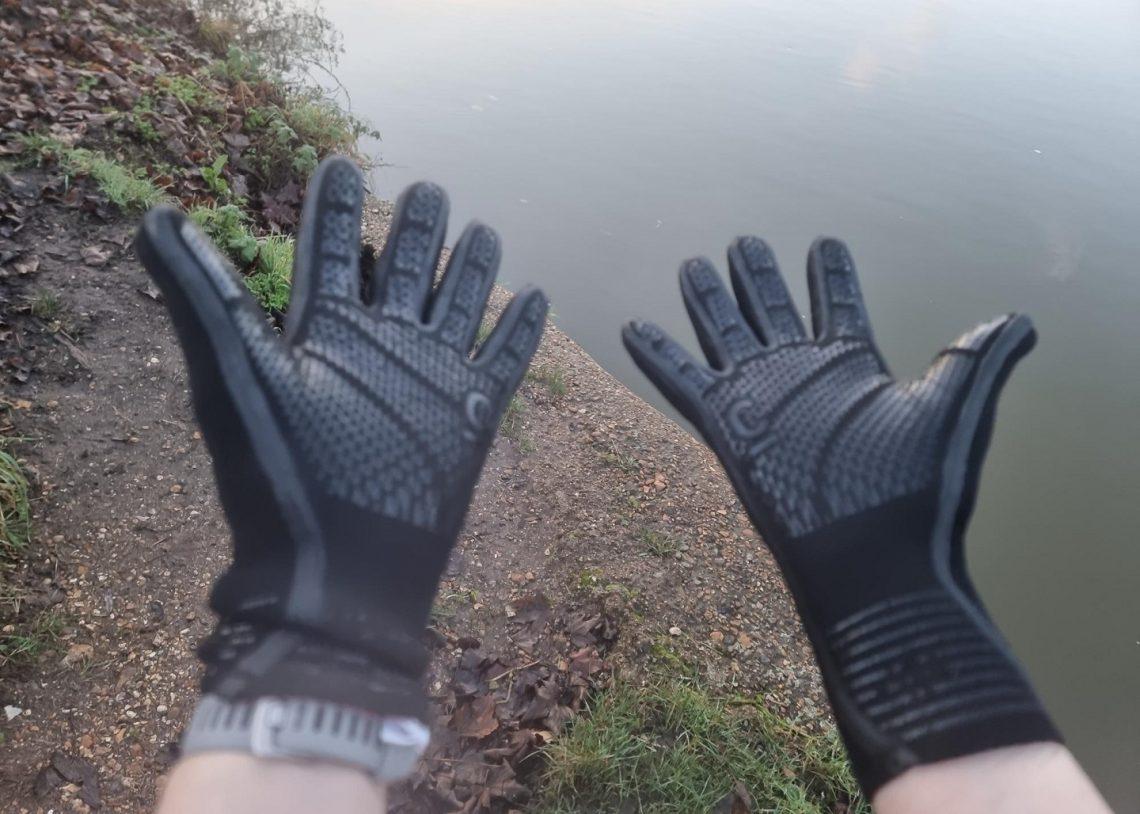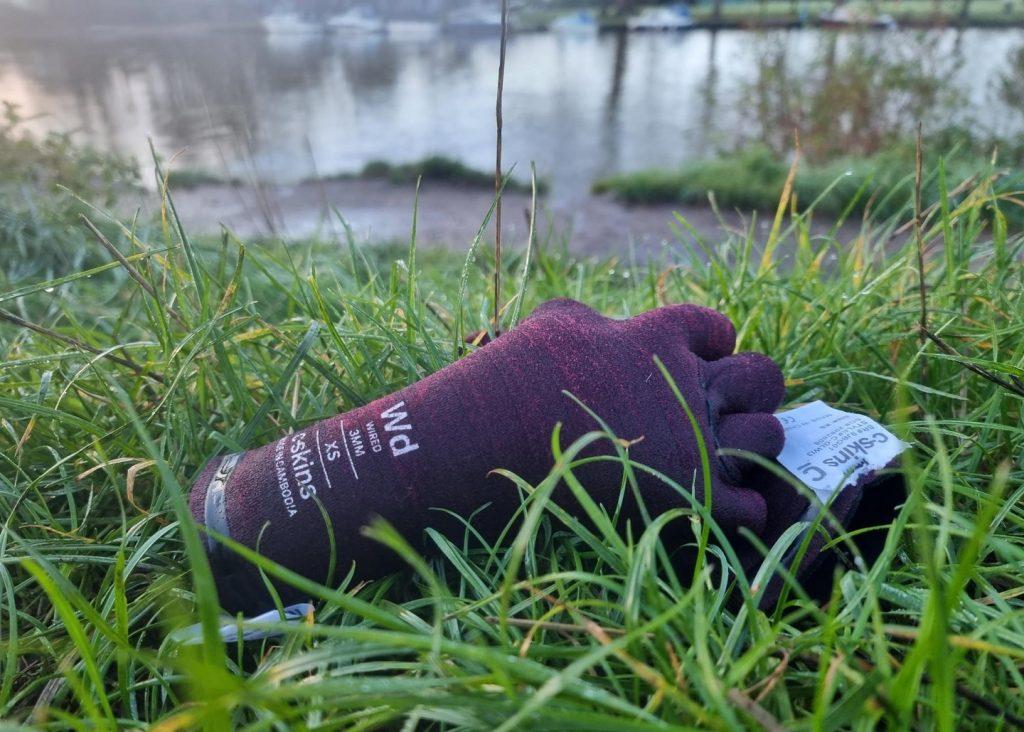
How to remove your neoprene accessories fast
Check out these tips we’ve curated from the Outdoor Swimmer team and readers to avoid getting colder than necessary after your swim
After a winter swim, the quicker you dry off and get dressed, the sooner you start warming up again. Typically, you feel amazing when you leave the water and have a couple of minutes before you start shivering and coordination becomes more difficult. Ideally, this is the time you should be removing your wet costume and pulling on your cosy layers. But, if you’re wearing neoprene accessories, you may waste precious time removing them. Neoprene gloves and boots are meant to be tight and don’t always come off easily.
So how can you get neoprene accessories off quickly?
The first question to ask is, could you manage without them? It may mean shortening your swim slightly, but you will still get the benefits of cold water immersion and should be able to dress quicker afterwards.
But there are good reasons for wearing gloves and booties. For example, if you suffer from arthritis or Raynaud’s. In extreme cold, even swimmers without these conditions will find their hands in pain and barely useable. Wearing neoprene accessories can ward off that uselessness and allow you to dress quickly – provided you can remove them fast enough. It’s also legitimate to protect your feet against painful pebbles and sharp objects. In an unscientific Twitter poll, 58% of cold water swimmers say they wear gloves for cold water swimming.
Which should I take off first, gloves or booties?

When it comes to dressing, we suggest prioritising the hands. Remove your gloves and dress your top half as quickly as possible. Cold wet feet may be uncomfortable but they could wait. Some suggestions for speedy glove removal, including tips from our readers, include:
- Before your swim, fill a drinking bottle with warm (not hot) water. As soon as you finish swimming, spray some warm water into the gloves. This helps them come off, and warms your fingers slightly (you can also spray some water into your boots to keep your toes warmer while you’re dressing your top half).
- Wear thin latex or plastic gloves beneath your neoprene ones. This can help you remove the gloves quicker but be mindful of creating unnecessary plastic waste and try to reuse the under-gloves as much as possible.
- Put some wetsuit lubricant on your wrists and hands to help the gloves slide off more easily.
- Remove your gloves while still in the water or just as you’re leaving the water (you can also let water into your gloves to help them off).
- Do a deal with a friend to help each other remove your gloves as soon as you exit the water.
- When you put your gloves on, rather than jamming your fingers as far in as they will go, leave some loose fabric at the fingertips. This is easier to grab hold of when pulling off the gloves.
- If you use gloves with a Velcro strap, leave an edge or a corner free so you can get hold of it easily (with teeth even) when undoing them.
- Some people find it easier to pull the gloves off from the wrist, turning them inside out as they go.
- Try gloves with a zip.
Separately, but related, one recommendation spotted on Twitter was to put on merino-lined gloves as soon as you’ve removed your neoprene ones, as these keep your hands warm while dressing.
What Outdoor Swimmer readers suggest
And Penny Armstrong sent us this video showing how she removes her gloves.
“Roll off inside out as much as possible. Wear a pair of surgical gloves underneath. Neoprene mittens are way easier to get off and warmer than gloves so an added bonus.”
@peakswims
I bought 5mm ‘socks’ – and they were just impossible to get off with cold hands in the winter. I had to ask for help. And we all know in deep winter it’s about getting warm and changed quickly. I chopped the ankles off, so they just cover my feet. Still cosy, much much much easier to remove! No regrets.”
@sparecreative
“Moisturise your hands and feet before you put your boots and gloves on. They just slip off easily after a swim.”
@dizzyhalo
“Pour warm water in both gloves when you get out of the water. It brings your hands back to life and your hands are then warm to get changed quicker”
@kerry.outdoors
“I don’t use them for that reason! I cool down so fast when out of the water it’s better for me to leave them off so I can get changed faster”
@daneatspizza2020
“Pop socks underneath. Helps peel them off quick after”
@rewildingremedy
“(clean) dog poop bags inside my boots”
@karenmac.farlane”
Don’t forget your feet
As for your feet, these aren’t so critical if you can dress your top half quickly. Standing on a piece of foam (such as a kickboard) can insulate your feet from the ground slightly. Even so, it’s better if you can remove any neoprene accessories quickly and put your feet into something dry and warming. Also, some swimmers simply prefer to get their wet cold booties off as quickly as possible. Our suggestions here are:
- Consider water shoes rather than boots. While these aren’t so warm, they still protect your feet from sharp objects and come off more easily.
- Try thin ankle socks or similar under your booties, but note these add to the kit you need to wash and dry.
- As with gloves, try zip-up options and using wetsuit lubricant.
- Ask someone for help.
If you wear a wetsuit for winter swimming, this also needs some consideration. While you shouldn’t be so cold when you get out (unless you’ve stayed in the water too long), you can still get cold quickly while changing.
If you have the option of changing inside near your swim exit point, then keep your wetsuit on until you are inside and out of the wind. If you are changing on a beach or riverbank then remove your wetsuit to the waist and pile on your top layers before removing the wetsuit completely (unless you are very skilled at removing a wetsuit completely and can get it off in 15 seconds or so).
If you’re looking for neoprene accessories check out the following
- Zoggs Neo 3 Gloves
- Zone3 Neoprene Heat-Tech Gloves
- Zoggs Neo 3 Socks
- Zone 3 Neoprene Heat-Tech Socks
Or check out the neoprene socks and gloves range in the Outdoor Swimmer Shop
Read our guide to the best neoprene accessories.
If you buy a product through a link on this page we may receive a commission.








